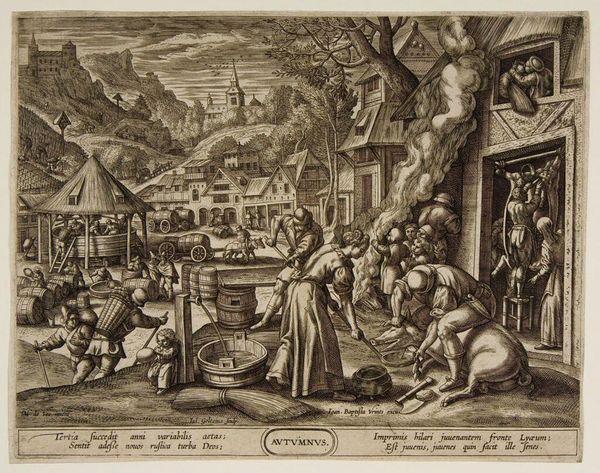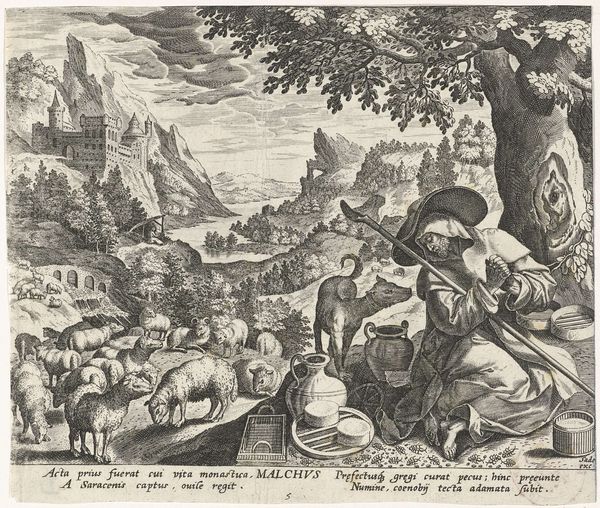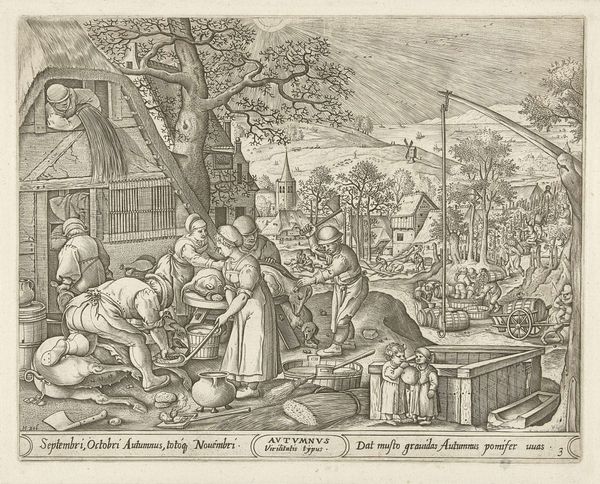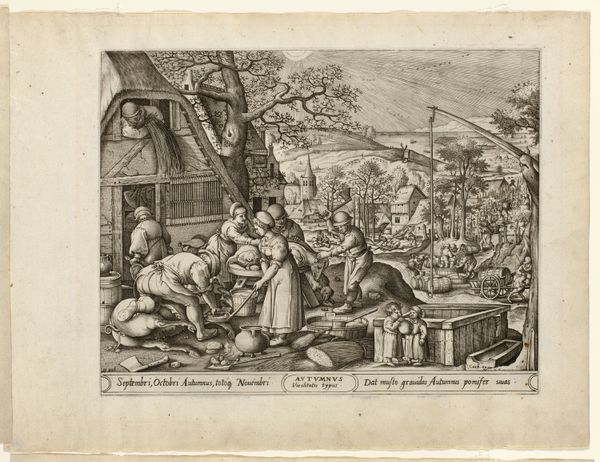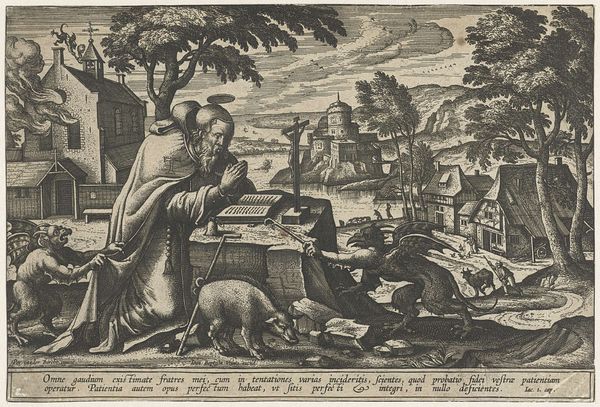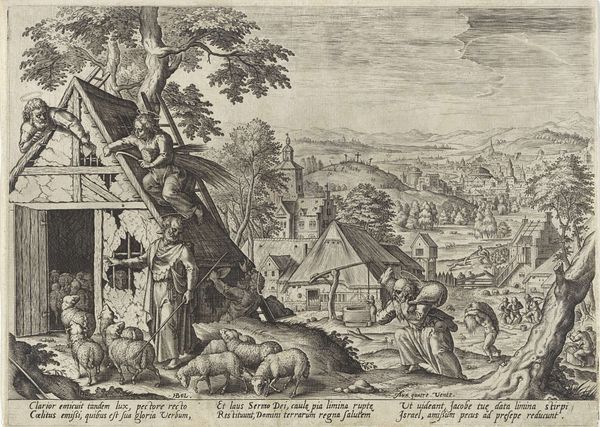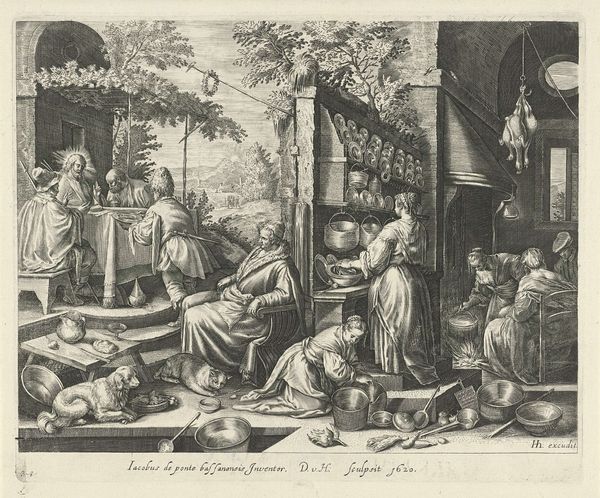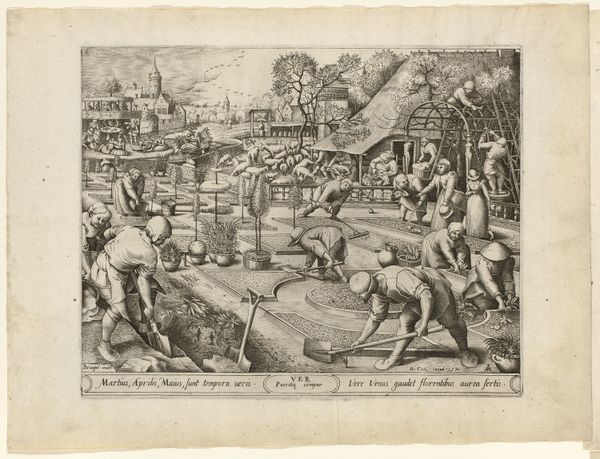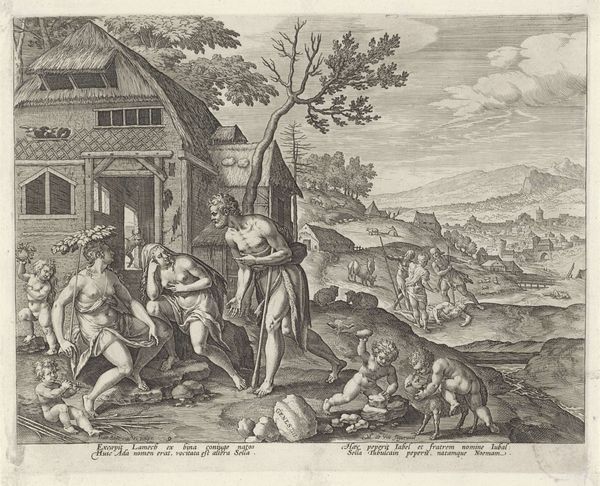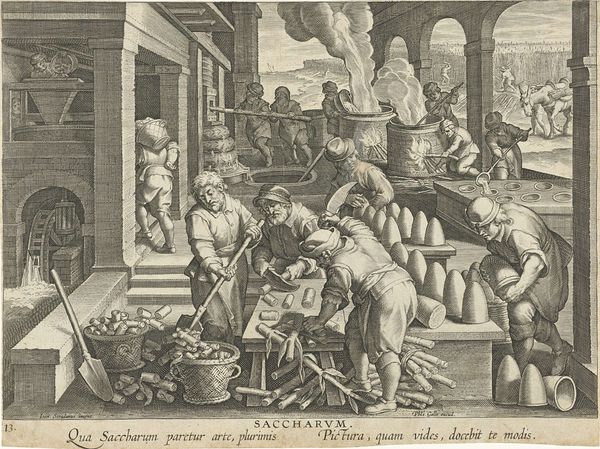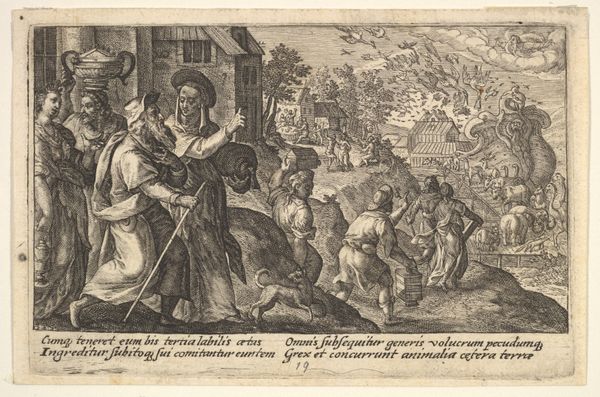
drawing, ink, engraving
#
drawing
#
ink drawing
#
pen drawing
#
pen illustration
#
pen sketch
#
pencil sketch
#
landscape
#
ink
#
genre-painting
#
northern-renaissance
#
engraving
Dimensions: width 282 mm, height 220 mm
Copyright: Rijks Museum: Open Domain
This is Julius Goltzius's "Herfst", or Autumn, made sometime between 1500 and 1595. Look closely, and you'll see a village bustling with the activities of the grape harvest. The print offers us a glimpse into the social and economic fabric of 16th-century rural life. Consider how gender roles are subtly depicted here. Predominantly men are shown undertaking the physical labor of harvesting and processing grapes. While women and children are present, their roles seem confined to domestic activities. The imagery reinforces a hierarchical structure, where labor and leisure are divided along class and gender lines. The artist provides a tableau that on the surface depicts a community united in its labor. But as the text at the bottom suggests, there is something more complex at play: "The rustic crowd feels that new gods are present". It prompts us to consider the shifts in cultural and spiritual beliefs during this era. What does it mean to witness a community caught between tradition and the winds of change? The artwork serves as a mirror, reflecting societal structures and the personal negotiations of identity within them.
Comments
No comments
Be the first to comment and join the conversation on the ultimate creative platform.
